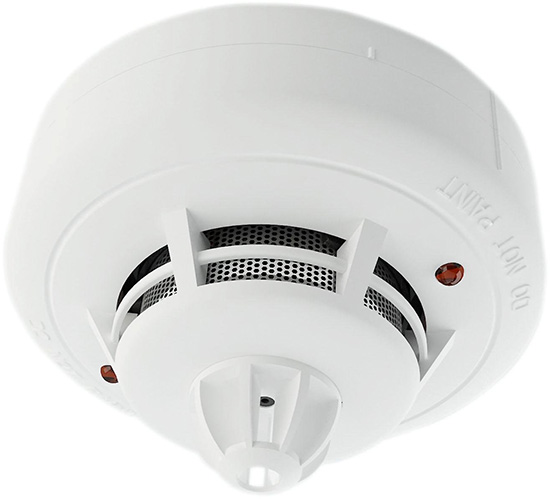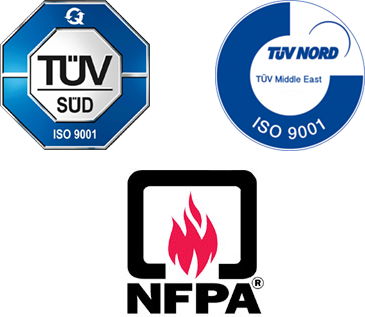Smoke Detector
Conventional TypeA smoke detector is a device that senses smoke, typically as an indicator of fire. Commercial security devices issue a signal to afire alarm control panel as part of a fire alarm system, while household detectors, known as smoke alarms, generally issue a local audible or visual alarm from the detector itself.
Smoke detectors are the most widely known and commonly used initiating devices. They are used to detect a fire in its incipient stage by sampling air which contains particles of combustion in relatively small concentrations. Most smoke detectors are classified as either Ionization Smoke Detectors (physical detection) or Photoelectric Smoke Detectors (optical detection). Additional technologies used are duct smoke detection, air aspiration smoke-sampling, projected beam and duct detectors.

The resulting increase in current flow is interpreted and processed by the control unit as a confirmation of the presence of smoke and a fire alarm signal is generated. In a conventional system, multiple smoke detectors are typically wired together in each zone and a single fire alarm control panel usually monitors a number of zones which can be arranged to correspond to different areas of a building.
In the event of a fire, the control panel is able to identify which zone or zones contain the detector or detectors in alarm, but cannot identify which individual detector or detectors are in a state of alarm.




